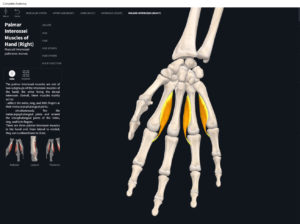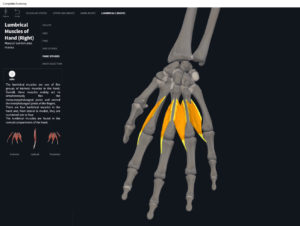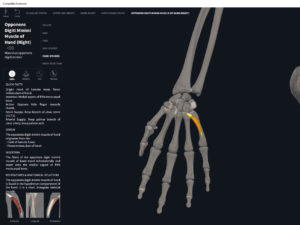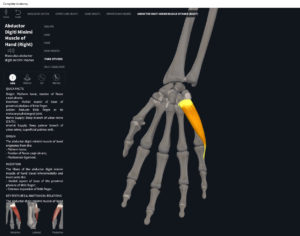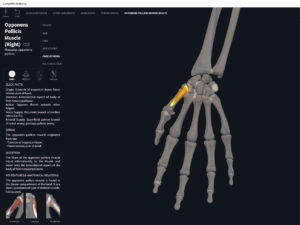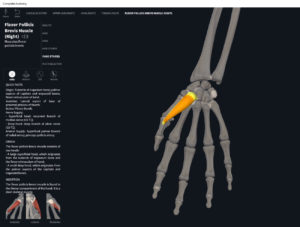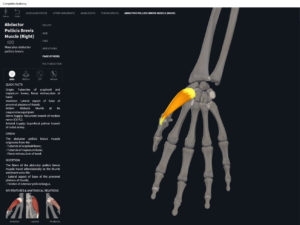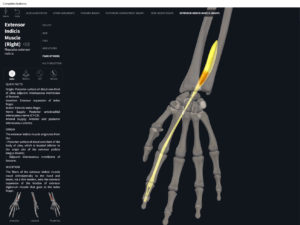Anatomy & Physiology: Muscles—Palmar Interossei.
Structure.
- Origin: sides of shafts of metacarpals of all fingers (except middle finger).
- Insertion: sides of bases of proximal phalanges of all fingers (except middle finger).
Function.
- Concentric action: adduct fingers at metacarpophalangeal joints; flex fingers at metacarpophalangeal joints. Lesser: flexion and extension of fingers 2, 4, and 5 at MCP, and PIP and DIP respectively.
- Reverse mover action: flex and adduct metacarpals of fingers 2, 4, and 5 at MCP; extend proximal phalanges of fingers 2, 4, and 5 at PIP and DIP.
- Eccentric action: controls/restrains/slows abduction and extension of fingers 2, 4, and 5 at MCP; and flexion of fingers 2, 4, and 5 at PIP and DIP.
- Isometric action: stabilizes MCP, PIP, and DIP of fingers 2, 4, and 5.
- Innervation: ulnar nerve.
- Arterial supply: branches of radial and ulnar arteries.
Clinical Significance.
More.
- https://www.anatomynext.com/palmar-interossei/
- https://www.youtube.com/watch?v=HtqZmJe5HtQ
- https://www.youtube.com/watch?v=FXHHuhEpjJY
References
Biel, A. (2015). Trail guide to the body: A hands-on guide to locating muscles, bones and more.
Cedars-Sinai. (2018). Vertebrae of the spine. Retrieved from https://www.cedars-sinai.org/health-library/diseases-and-conditions/v/vertebrae-of-the-spine.html
Clark, M., Lucett, S., Sutton, B. G., & National Academy of Sports Medicine. (2014). NASM essentials of corrective exercise training. Burlington, MA: Jones & Bartlett Learning.
Jenkins, G., & Tortora, G. J. (2012). Anatomy and Physiology: From Science to Life, 3rd Edition International Stu. John Wiley & Sons.
Muscolino, J. E. (2017). The muscular system manual: The skeletal muscles of the human body.

